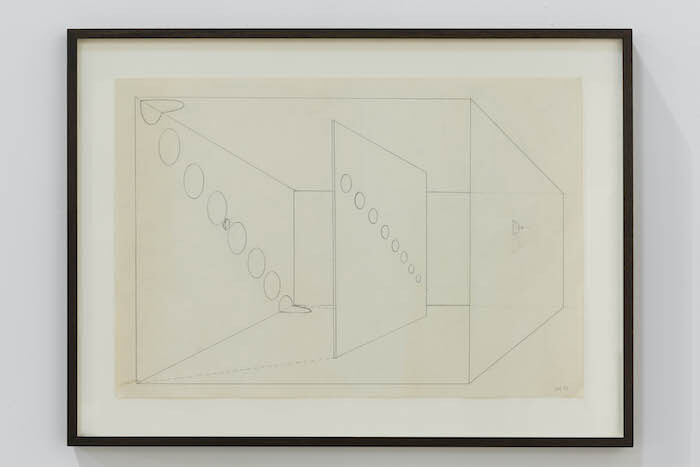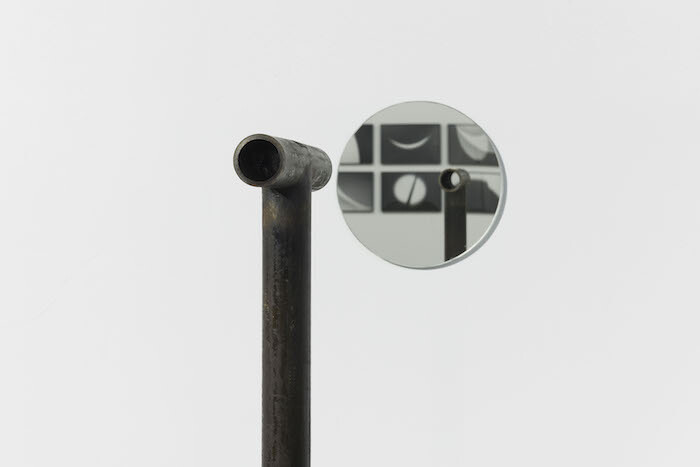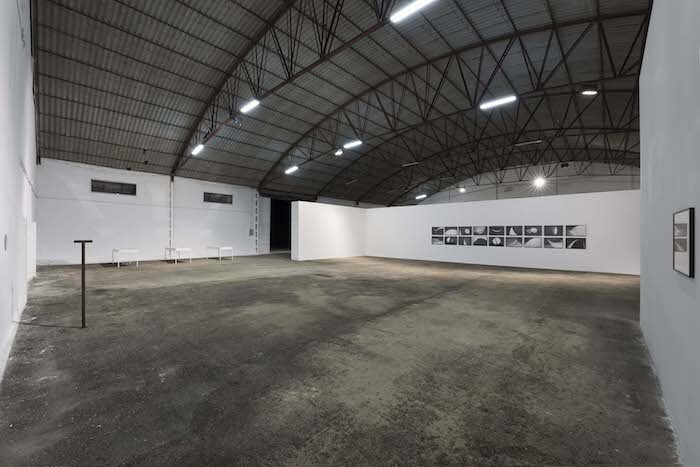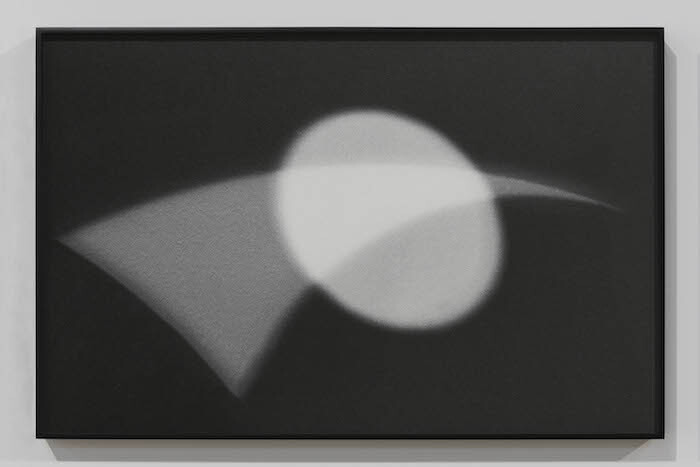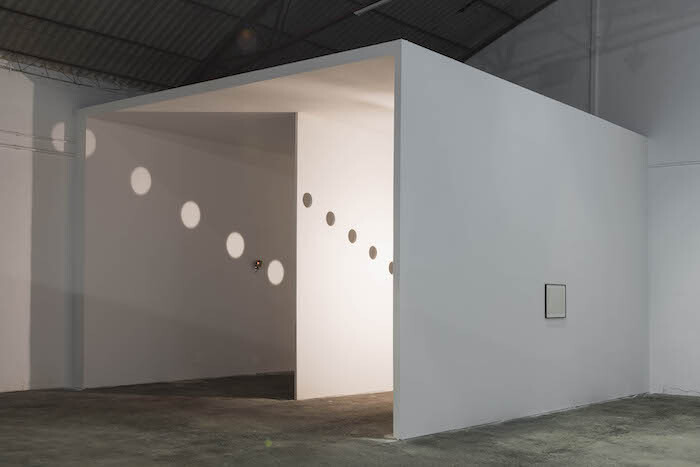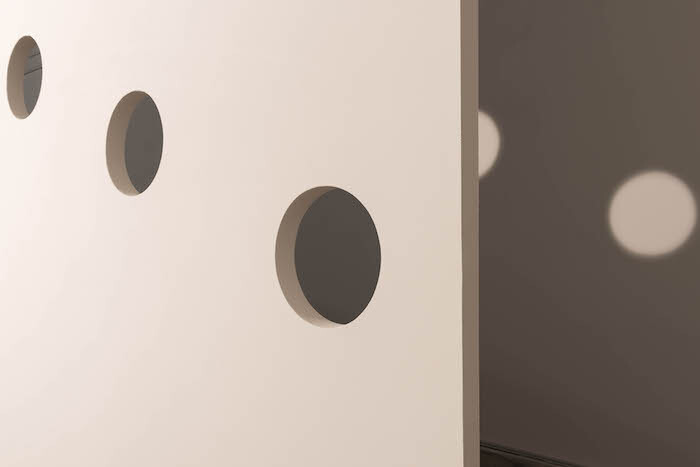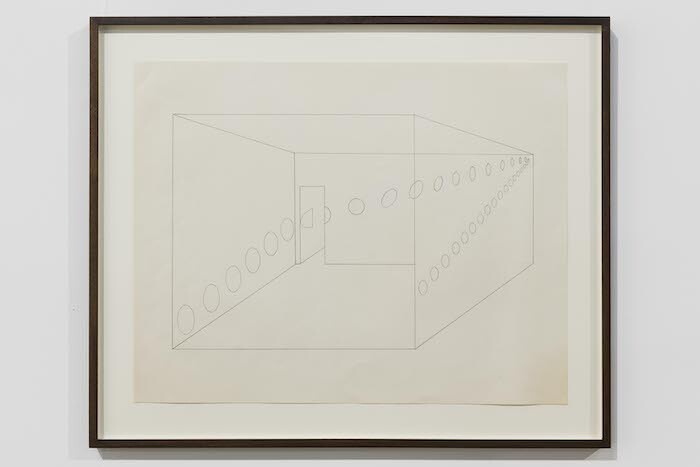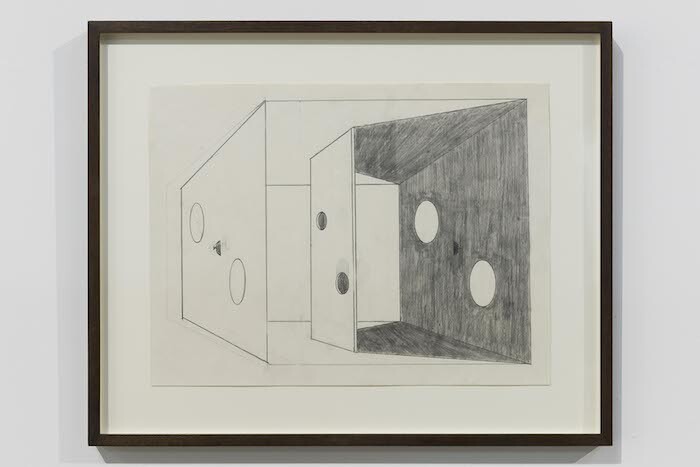Nancy Holt’s works seem to be camouflaged in the hangar that hosts her Ibiza exhibition at Parra & Romero. This sense of spaciousness is relevant to Holt’s practice, who remains best known for her site-specific earthworks. Like many artists of the 1960s and ’70s, Holt was critical of the gallery system, and her pieces for indoor spaces are rare. The Ibiza exhibition displays two of the very few installations that were conceived for interiors or that could be activated in both interior and exterior spaces, such as Locator with Mirror (1972), the first piece visitors encounter upon entering. Holt’s “Locators” are steel vertical pipes that support shorter horizontal pipes that direct the viewer’s gaze towards a specific point—in this case, towards a mirror on the wall, which returns the viewer’s own image, a disruptive experience in an exhibition. The “Locators” are a seminal body of work; they include Missoula Ranch Locators: Vision Encompassed (1972), eight locators in a circle measuring 12 meters in diameter in the middle of a field surrounded by mountains in Montana, which was Holt’s first device in a natural landscape that framed vision to change reference points or scale.
The exhibition’s main installation, Holes of Light (1973), also an early work, consists of a rectangular construction with a central partition wall perforated with circular shapes. The light alternates from one side to the other, projecting changing patterns on the walls that viewers can observe as they move around. Like most of Holt’s works, both installations propose a participatory experience that makes viewers aware of their own perception with the formal simplicity that characterizes the conceptual practices of the 1970s.
The study of the interaction of light and shadow, of perceptual processes, and of the circle as a frame for vision that we see in Holes of Light traverse Holt’s practice. The beautiful series of photographic drawings “Light and Shadow” (1978) that completes the exhibition was also produced by projecting light through circular shapes, resulting in abstract black-and-white images evoking the movements of the stars, another of the artist’s recurring interests. These photographic drawings—that recall the purity of certain avant-garde suprematist compositions—are the exhibition’s link to the mysticism that is experienced in some of her large-scale earthworks, such as Sun Tunnels (1973-76).
Viewers of this exhibition are introduced to Holt’s earthworks through the documentation of works like 1972’s Views Through a Sand Dune—installefd in Narragansett Beach, Rhode Island—and Sun Tunnels, which emerged as a response to the artist’s encounter with the vastness of the American West. Installed in the Utah dessert, Sun Tunnels also has a simple formal appearance: four giant cylinders that align with the sun during the summer and winter solstices like a megalithic monument. But here visitors can shelter and observe the changes of light on the vast landscape while small holes on the top of the tunnels project the constellations of Draco, Perseus, Columba, and Capricorn.
Holt’s large-scale installations further explored the interplay of light and shadow, processes of perception, and the movement of celestial bodies that we see in the early works shown in Ibiza, but they also explore our relation to landscape and time. They are observation devices that propose an experience of the environment in the broadest sense of the word, encompassing earth and sky, and of the awareness of time—human time, the cyclic time of nature, and cosmic time. In other words, they propose a sensorial consciousness of the mystery of existence.



